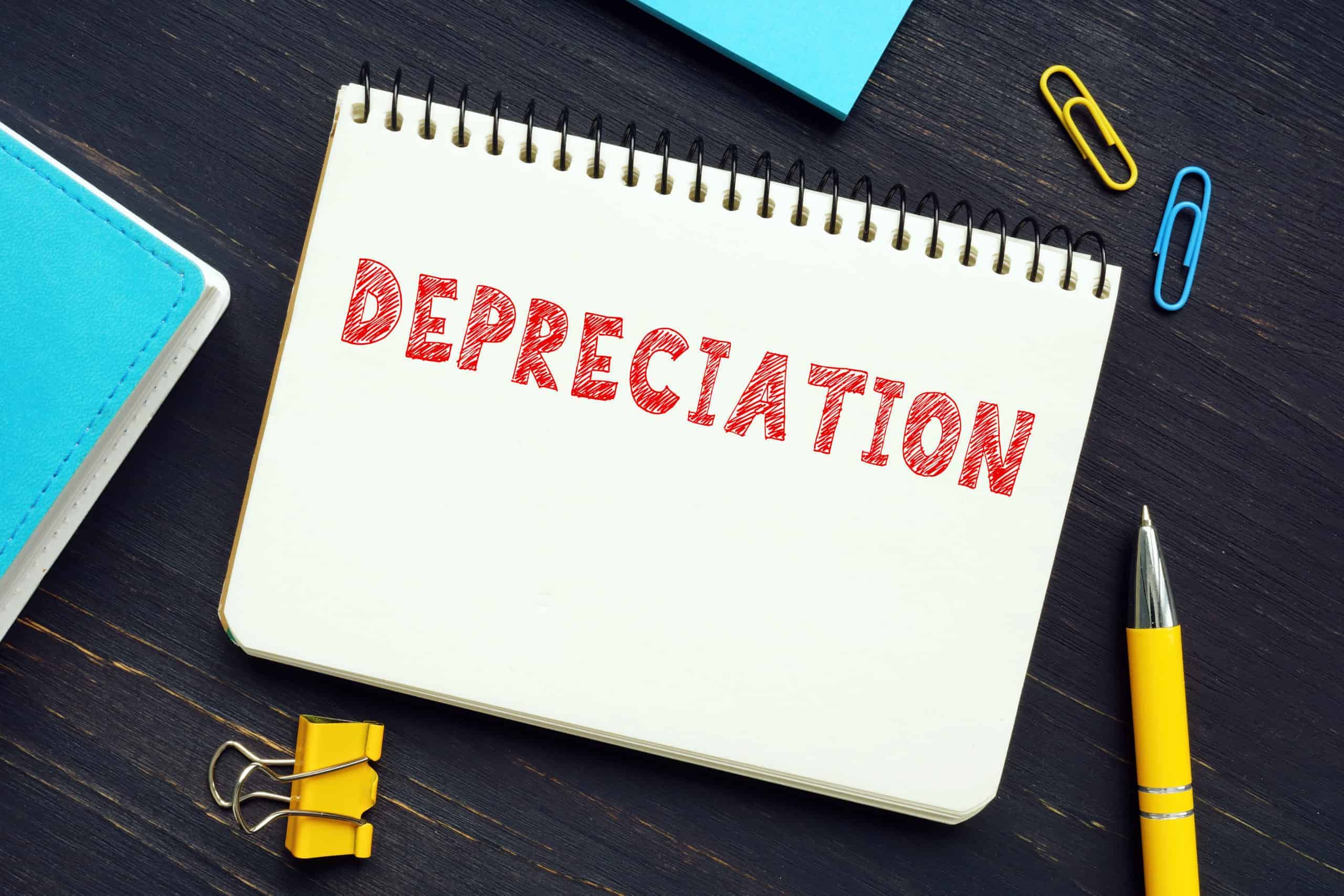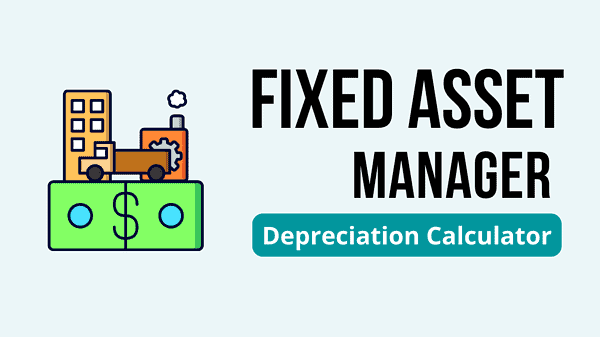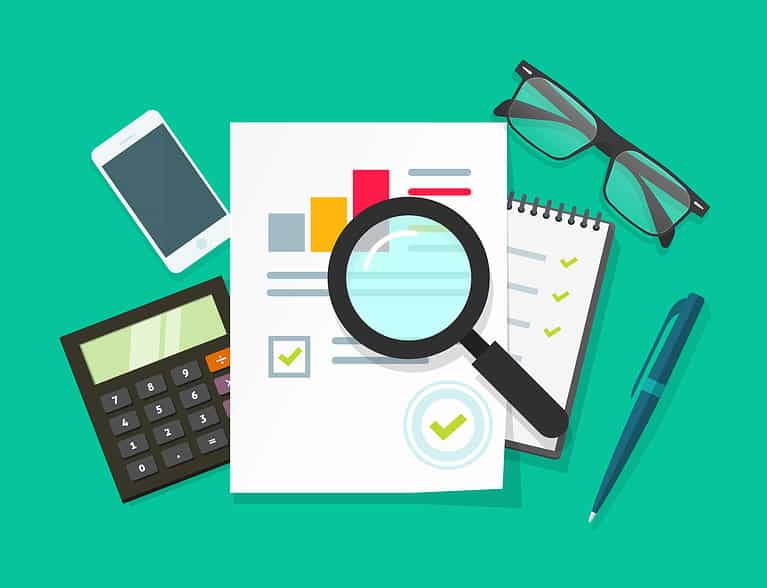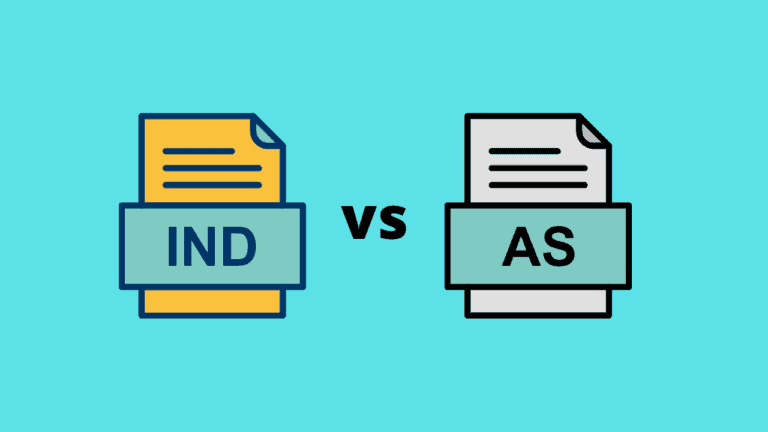How to Calculate Depreciation as per Companies Act 2013

In this guide, we are going to learn how to calculate depreciation as per Companies Act 2013 on Fixed Assets and Property Plant & Equipment under different methods.
Before diving deep into the topic we will be discussing the basics and making sure everything is covered.
What Is Depreciation?
Depreciation allows recognizing a portion of the cost of a fixed asset to the revenue generated by the fixed asset. This is in line with the matching principle of Accounting. A business has to incur costs on Property, Plant and Equipment for generating revenue. These costs cannot be directly recognized as an expense when they are incurred as they help in generating revenue for more than a year.
If we do not use depreciation in accounting, then all assets have to be expensed out once they are bought. This will result in huge losses in the initial period and high profitability in periods when the revenue is booked without an offsetting expense.
Depreciation vs Amortization vs Impairment
Fixed Assets can be of two types. Tangible and Intangible. Intangible assets are non-physical assets that are essential to a company, such as patents, trademarks, and copyrights, whereas Tangible assets are physical assets like Buildings, Furniture, Office equipment, Machinery etc.
- Depreciation is spreading the cost of a Tangible asset over a specific period of time,
- Amortization is spreading the cost of an Intangible asset over a specific period of time,
- Impairment is an unusual and permanent decrease in the value of both Tangible and Intangible assets, due to physical damage, obsolescence of technology, changes in law, etc.
| Particulars | AS | Ind AS | Companies Act 2013 |
|---|---|---|---|
| Depreciation of Tangible Fixed Assets | AS-10 | Ind AS-16 | Schedule-II |
| Amortization of Intangible Fixed Assets | AS-26 | Ind AS-38 | NA |
| Impairment of All Fixed Assets | AS-28 | Ind AS-36 | NA |
Are all Fixed Assets Depreciated?
All Tangible Assets which have a useful life greater than one year and whose value is expected to reduce in the coming years are eligible for depreciation. Land is the only Tangible asset that cannot be depreciated as the value of land appreciates with time.
Tangible Assets of Nominal value can be entirely expensed out in the year in which they are purchased based on the discretion of the user. All Intangible assets can be generally amortized over their useful life if it is greater than one year.
Inputs to Calculate Depreciation as per Companies Act
There are four inputs required to calculate depreciation as per companies act 2013:
- Useful life – It is the period over which an asset is expected to be productive or available for use. It can also be the number of production units expected to be obtained from the asset. Depreciation is recognized over the useful life of an asset. Any change in the expected useful life of an asset should be adjusted over the remaining life of the asset, and depreciation already booked should not be retrospectively changed. Standard Useful Lives for various classes of assets are prescribed in Schedule II of the Companies Act 2013.
- Residual value – It is the reduced amount at which a company is able to dispose of an asset after the completion of its useful life. Any change in the expected residual value of an asset should be adjusted over the remaining life of the asset, and depreciation already booked should not be retrospectively changed. The residual value of an asset shall not be ordinarily more than five percent of the original cost of the asset as per Schedule II of the Companies Act 2013.
- Depreciable Amount – The depreciable amount of an asset is the cost of an asset less its residual value. The cost of an item of the fixed asset comprises its purchase price, including import duties and other non-refundable taxes or levies and any directly attributable cost of bringing the asset to its working condition for its intended use. If the buyer is eligible to claim an input tax credit of taxes then they are not included in the cost. Any trade discounts and rebates are deducted in arriving at the purchase price.
Examples of directly attributable costs are:
(i) initial delivery and handling costs,
(ii) installation cost,
(iii) professional fees, like fees of architects and engineers.
- Ready to use Date – Depreciation on assets should be charged once the asset is ready to use. The purchase date or Put to Use date is not relevant for charging depreciation. Even if an asset isn’t put to use, with the passage of time, its useful life goes on decreasing and depreciation should be charged on the same.
Methods of Depreciation as per Companies Act
There are three methods to calculate depreciation as per companies act 2013:
- Straight-line Method (SLM) – The asset is depreciated equally every year over the useful life of the asset as a percentage of the Initial Cost. Depreciation is calculated for a year and proportionately adjusted if used for less than a year.

| Purchase Cost | 1,00,000 | Residual Value | 5% |
| Ready to Use Date | 01-08-2021 | Useful Life | 5 Years |
| SLM Rate Formula | = [(1 – Residual %) / Useful life in Years] |
| SLM Rate (Yearly) | = [(1 – 0.05) / 5] = 19% |
| Financial Year | Opening Carrying Value | Depreciation Formula [Purchase Cost x Yearly SLM Rate x Period used] | Depreciation Amount | Closing Carrying Value Formula [Opening Carrying Value – Depreciation] | Closing Carrying Value |
|---|---|---|---|---|---|
| 2021-22 | 1,00,000 | (1,00,000 x 19%) x (243/365) | 12,649 | (1,00,000 – 12,649) | 87,351 |
| 2022-23 | 87,351 | (1,00,000 x 19%) x (365/365) | 19,000 | (87,351 – 19,000) | 68,351 |
| 2023-24 | 68,351 | (1,00,000 x 19%) x (366/366) | 19,000 | (68,351 – 19,000) | 49,351 |
| 2024-25 | 49,351 | (1,00,000 x 19%) x (365/365) | 19,000 | (49,351 – 19,000) | 30,351 |
| 2025-26 | 30,351 | (1,00,000 x 19%) x (365/365) | 19,000 | (30,351 – 19,000) | 11,351 |
| 2026-27 | 11,351 | (1,00,000 x 19%) x (122/365) | 6,351 | (11,351 – 6,351) | 5,000 |
- Written Down Value (WDV) – The method distributes the asset depreciation unevenly throughout its life. It books higher expenses in the early years as assets have higher productivity and carrying value in earlier years as opposed to the later years of their life. A yearly WDV rate is calculated and the annual depreciation amount is calculated from the Opening WDV of each year.
| Purchase Cost | 1,00,000 | Residual Value | 5% |
| Ready to Use Date | 01-08-2021 | Useful Life | 5 Years |
| WDV Rate Formula | = 1 – [Residual % ^ (1 / Useful life in Years)] |
| WDV Rate (Yearly) | = 1 – (0.05 ^ (1 / 5)) = 45.07% |
| Financial Year | Opening Carrying Value | Depreciation Formula [Opening Carrying Value – Closing Carrying Value] | Depreciation Amount | Closing Carrying Value Formula [Initial Value x (1 – Rate) ^ cumulative years] | Closing Carrying Value |
|---|---|---|---|---|---|
| 2021-22 | 1,00,000 | (1,00,000 – 67,107) | 32,893 | [1,00,000 x (1 – 0.4507) ^ (243/365)] | 67,107 |
| 2022-23 | 67,107 | (67,107 – 36,860) | 30,246 | [1,00,000 x (1 – 0.4507) ^ (243/365 + 1)] | 36,860 |
| 2023-24 | 36,860 | (36,860 – 20,247) | 16,614 | [1,00,000 x (1 – 0.4507) ^ (243/365 +1+1)] | 20,247 |
| 2024-25 | 20,247 | (20,247 – 11,121) | 9,126 | [1,00,000 x (1 – 0.4507) ^ (243/365 +1+1+1)] | 11,121 |
| 2025-26 | 11,121 | (11,121 – 6,109) | 5,013 | [1,00,000 x (1 – 0.4507) ^ (243/365 +1+1+1+1)] | 6,109 |
| 2026-27 | 6,109 | (6,109 – 5,000) | 1,109 | [1,00,000 x (1 – 0.4507) ^ (243/365 +1+1+1+1 +122/365)] | 5,000 |
- Unit of Production Method (UOP) – The depreciation on an asset can be provided, where appropriate, on the basis of the units expected to be obtained from the use of the asset. The calculation is based on the output capacity of the asset rather than the number of years.
Per unit Depreciation = (Asset cost – Residual value) / Useful life in units of production
Multiple Shift Depreciation
If an asset is eligible for an extra shift depreciation as per Companies Act 2013 and is used for a double shift, then the depreciation will increase by 50% for that period and in the case of a triple shift, the depreciation shall increase by 100% for that period.
Which Depreciation Method to Choose?
It depends on the type of assets and how they are used. The primary method for steady depreciation is the straight-line method. The advantage of using a steady depreciation rate is the ease of calculation. The straight-line depreciation method could be the most appropriate for assets such as buildings, which are used for an equal amount during each year of their useful life.
In the case of a fixed asset that is used more in the early years of its life than in the later years, the declining balance method could be useful. An example of this could be a business vehicle that is used less as it ages.
Unit of production method is available if the number of units that can be produced or serviced from the use of the asset is the major limiting factor rather than the time, as with airplane engines whose life spans are tied to their usage levels.
Depreciation Journal Entry
| Yearly Depreciation | Dr/Cr | Amount |
|---|---|---|
| Depreciation Expense | Debit | xxxx |
| Accumulated Depreciation | Credit | xxxx |
The Accumulated Depreciation account appears on the balance sheet as a deduction from the original purchase price of an asset.
| Sale of Fixed Asset | Dr/Cr | Amount |
|---|---|---|
| Bank | Debit | xxxx |
| Accumulated Depreciation | Debit | xxxx |
| Loss on Sale (in case of Loss) | Debit | xxxx |
| Profit on Sale (in case of Profit) | Credit | xxxx |
| Fixed Asset | Credit | xxxx |
| Disposal of Fixed Asset | Dr/Cr | Amount |
|---|---|---|
| Accumulated Depreciation | Debit | xxxx |
| Loss on Disposal | Debit | xxxx |
| Fixed Asset | Credit | xxxx |
Rates of Depreciation as per Companies Act 2013 / AS
| Class of Asset | Sub Class of Asset | Act / AS | Useful Life | SLM Rate | WDV Rate |
|---|---|---|---|---|---|
| Buildings | Non Factory Buildings – RCC | Sch-II | 60 | 1.58% | 4.87% |
| Buildings | Non Factory Buildings – Non RCC | Sch-II | 30 | 3.17% | 9.5% |
| Buildings | Factory Buildings | Sch-II | 30 | 3.17% | 9.5% |
| Buildings | Wells & Tube wells | Sch-II | 5 | 19% | 45.07% |
| Buildings | Fences | Sch-II | 5 | 19% | 45.07% |
| Buildings | Carpeted Roads – RCC | Sch-II | 10 | 9.5% | 25.89% |
| Buildings | Carpeted Roads – Non RCC | Sch-II | 5 | 19% | 45.07% |
| Buildings | Non Carpeted Roads | Sch-II | 3 | 31.67% | 63.16% |
| Buildings | Bridges, Culverts, Bunkers, etc. | Sch-II | 30 | 3.17% | 9.5% |
| Buildings | Temporary structure | Sch-II | 3 | 31.67% | 63.16% |
| Buildings | Others | Sch-II | 3 | 31.67% | 63.16% |
| Furniture and Fittings | Furniture and Fittings | Sch-II | 10 | 9.5% | 25.89% |
| Furniture and Fittings | Furniture and Fittings used in hotels, theatres, schools etc. | Sch-II | 8 | 11.88% | 31.23% |
| Electrical Installations | Electrical Installations | Sch-II | 10 | 9.5% | 25.89% |
| Office Equipments | Office Equipments | Sch-II | 5 | 19% | 45.07% |
| Computers | Laptop | Sch-II | 3 | 31.67% | 63.16% |
| Computers | Desktop | Sch-II | 3 | 31.67% | 63.16% |
| Computers | End User Device | Sch-II | 3 | 31.67% | 63.16% |
| Computers | Software – which is integral part of system | Sch-II | 3 | 31.67% | 63.16% |
| Computers | Network Devices | Sch-II | 6 | 15.83% | 39.3% |
| Computers | Server | Sch-II | 6 | 15.83% | 39.3% |
| Plant and Machinery | Plant and Machinery | Sch-II | 15 | 6.33% | 18.1% |
| Plant and Machinery | Continuous Process Plant | Sch-II | 25 | 3.8% | 11.29% |
| Vehicles | Motor Cycles – Two Wheelers | Sch-II | 10 | 9.5% | 25.89% |
| Vehicles | Motor Cars | Sch-II | 8 | 11.88% | 31.23% |
| Vehicles | Motor Lorries | Sch-II | 8 | 11.88% | 31.23% |
| Vehicles | Motor Buses | Sch-II | 8 | 11.88% | 31.23% |
| Vehicles | Motor Cars used in a business of hire | Sch-II | 6 | 15.83% | 39.3% |
| Vehicles | Motor tractors, harvesting combines and heavy vehicles | Sch-II | 8 | 11.88% | 31.23% |
| Vehicles | Electrically operated vehicles | Sch-II | 8 | 11.88% | 31.23% |
| Vehicles | Aircrafts or Helicopters | Sch-II | 20 | 4.75% | 13.91% |
| Vehicles | Locomotives tramways and railway used by concerns | Sch-II | 15 | 6.33% | 18.1% |
| Vehicles | Ropeway structures | Sch-II | 15 | 6.33% | 18.1% |
| Intangible Asset | Software | AS-26 | 10 | 10% | 36.9% |
| Intangible Asset | Know-How | AS-26 | 10 | 10% | 36.9% |
| Intangible Asset | Patent | AS-26 | 10 | 10% | 36.9% |
| Intangible Asset | Copyright | AS-26 | 10 | 10% | 36.9% |
| Intangible Asset | License | AS-26 | 10 | 10% | 36.9% |
| Intangible Asset | Goodwill | AS-26 | 10 | 10% | 36.9% |
| Land | Freehold Land | NA | NA | NA | NA |
| Land | Leasehold Land | NA | NA | NA | NA |
| Leasehold Improvements | Leasehold Improvements | NA | NA | NA | NA |
Depreciation as per Companies Act 2013 vs Income Tax Act 1961
| Basis of Difference | Depreciation as per Companies Act, 2013 | Depreciation as per Income Tax Act, 1961 |
|---|---|---|
| Individual Asset vs Block of Asset | Depreciation as per companies act is charged on each asset individually subject to its reasonable size as per component accounting. | Assets are classified into groups or blocks and depreciated collectively at a common rate of depreciation. |
| Life vs Rate Based | Residual value and Useful life-based calculation. | Fixed Rate-based calculation. |
| Methods of Calculation | Three methods of calculation are available, Straight Line Method, Written Down Value Method and Units of Production Method. | Only the WDV method of calculation is available under Income Tax. |
| Assets used for part of the year | Depreciation as per companies act is calculated on a pro-rata basis up to the number of days used. | If the asset is used for more than 180 days then depreciation is charged for a whole year, and if used less than or equal to 180 days then for half a year. |
| Start Date of Depreciation | Depreciation charge starts from the date asset is ready for use and not from the date it is purchased or actually put to use. | Depreciation charge starts from the date asset is put to use and not from the date it is purchased or ready for use. |
| Additional Depreciation | No additional depreciation is available. | Additional depreciation is available to a certain class of assets during the initial year. |
Software for Depreciation Calculation
If you are looking for a depreciation calculator as per companies act and income tax act, please have a look at the tool below.



